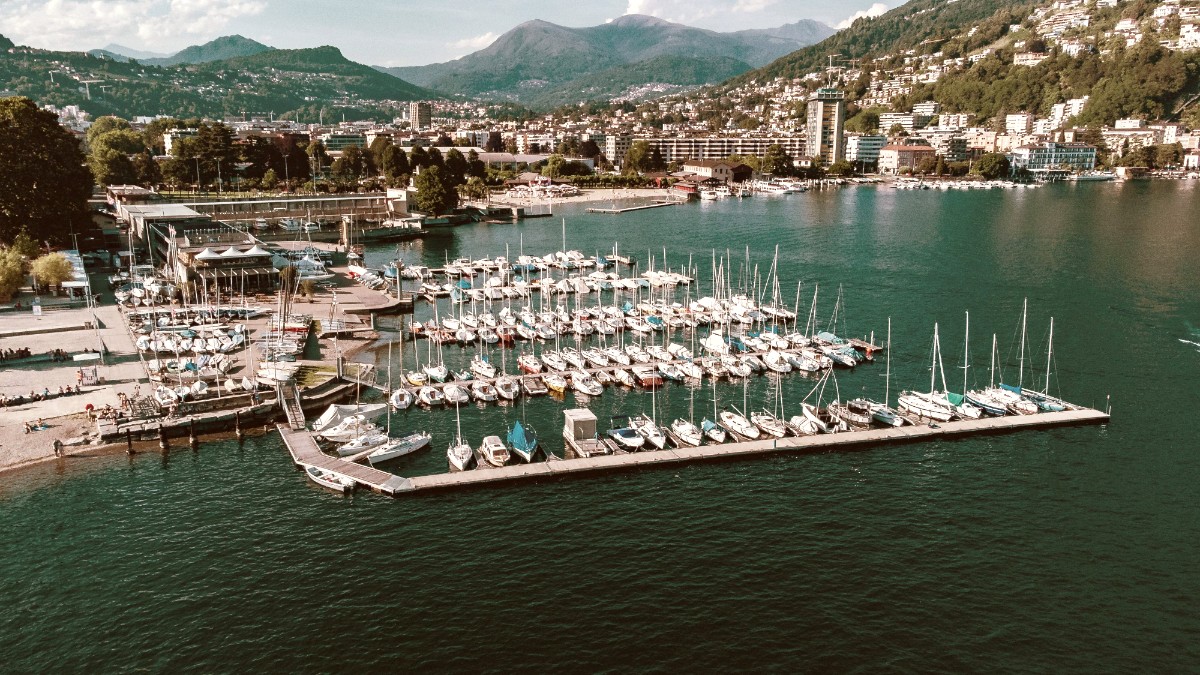
Ticino, Switzerland
Ticino cuisine stands apart from traditional Swiss fare, drawing inspiration from Lombardy and Piedmont in Italy. It features a Mediterranean spirit, utilizing olive oil, fresh herbs, and abundant local produce. Historically, the region's cuisine was peasant's fare, making the most of readily available, seasonal ingredients.
Common ingredients include polenta, risotto, and chestnuts. You will find various cheeses (like the fresh formaggini), cured meats (salumi), and fresh fish from Lake Maggiore. Herbs like rosemary and sage frequently season dishes. Flavors are generally robust, earthy, and satisfying.
Lunch (Pranzo) is often the main meal, typically 12:00-14:00. Dinner (Cena) usually starts from 19:00 onwards. Many restaurants close between services.
Table service is common. It is polite to wait to be seated at most restaurants, especially mid-range to upscale establishments.
Service charges are included in prices by law in Switzerland. Tipping is not obligatory but appreciated for good service. Round up the bill or leave 5-10% for excellent service.
A hearty, classic Ticinese dish. It features creamy cornmeal porridge, cooked slowly until smooth, served with tender, slow-cooked beef stew.
Find this comforting dish in traditional grottoes and many local restaurants.
A rich, creamy risotto prepared with local porcini mushrooms. This dish is seasonal.
Best enjoyed in autumn when porcini are in season. Many restaurants throughout Ticino serve excellent versions.
Given Locarno's location on Lake Maggiore, fresh fish from the lake is a specialty. Dishes often feature perch, pike, or trout, grilled or pan-fried with herbs.
Look for these in lakeside restaurants.
Italian-style ice cream is widely available, with numerous flavors. A refreshing treat on a warm day.
Grappa (strong alcoholic digestif), local beers, Gazosa (sparkling lemonade), and Italian-style coffee are popular choices.
Many upscale hotels in Locarno and Ascona (e.g., Hotel La Palma au Lac, Hôtel Belvedere) feature excellent fine dining. Independent restaurants are recognized by guidebooks like Gault&Millau or Michelin.
Numerous pizzerias, trattorias, and restaurants offer traditional Ticinese and Italian cuisine. Find them around Piazza Grande, the Old Town, and along the lakeside promenade.
Grottoes: Traditional rustic restaurants, often outside the city center, offering authentic Ticinese food at more moderate prices in unique settings. Takeaways: Pizza by the slice, sandwiches from bakeries. Supermarkets: Coop and Migros provide ready-to-eat meals.
The weekly market on Piazza Grande (usually Thursday) sells local produce, cheeses, cured meats, and other regional specialties. An excellent place to pick up fresh ingredients or sample local flavors.
Locarno does not feature dedicated large food halls.
In addition to Ticinese and Italian food, you can find restaurants offering other European cuisines (e.g., French) and Asian options (Chinese, Japanese), especially in the city center.
Variety available for diverse tastes.
Enjoying fresh lake fish or other dishes with stunning views of Lake Maggiore, notably at sunset.
Many hotels host highly-rated restaurants, convenient for guests and open to public.
Some establishments source ingredients directly from local farms and producers.
Use online restaurant review platforms (e.g., TripAdvisor, HappyCow for vegan/vegetarian options) for helpful information.
Check reviews for specific dietary notes.
Consider calling restaurants ahead to confirm their offerings and specific dietary accommodations.
Direct communication helps avoid issues.
The Autumn Chestnut Festival (Sagra delle Castagne) in October celebrates the chestnut harvest with numerous food stalls and traditional dishes. Various local wine festivals also occur.
Lakeside dining offers stunning views with your meal.
Some hotels or private chefs offer Ticinese cooking classes, focusing on regional specialties like making polenta or traditional desserts.
Visits to local vineyards, cheese producers, and olive oil mills in the surrounding areas. Ticino Turismo provides information.
The Autumn Chestnut Festival (Sagra delle Castagne) in October celebrates the chestnut harvest. Various local wine festivals also occur throughout the year.
Ticinese cuisine highlights seasonal produce. Visiting during different times of year offers unique tasting experiences.
Autumn for chestnuts, spring for fresh greens.
Purchase local cheeses, cured meats, honey, and chestnut products from markets or specialty shops for souvenirs.
Support local artisans and producers.
For an authentic experience, seek out a traditional "grotto" outside the city center. Many offer hearty, well-priced Ticinese dishes in a charming, rustic setting.
Ask for recommendations from locals or hotel staff to discover hidden culinary gems and truly authentic spots.
Locarno's food scene provides a delicious window into the region's culture and heritage. Savor local specialties and explore its diverse dining landscape.
For an authentic experience, seek out a traditional "grotto" outside the city center. Many offer hearty, well-priced Ticinese dishes in a charming, rustic setting.